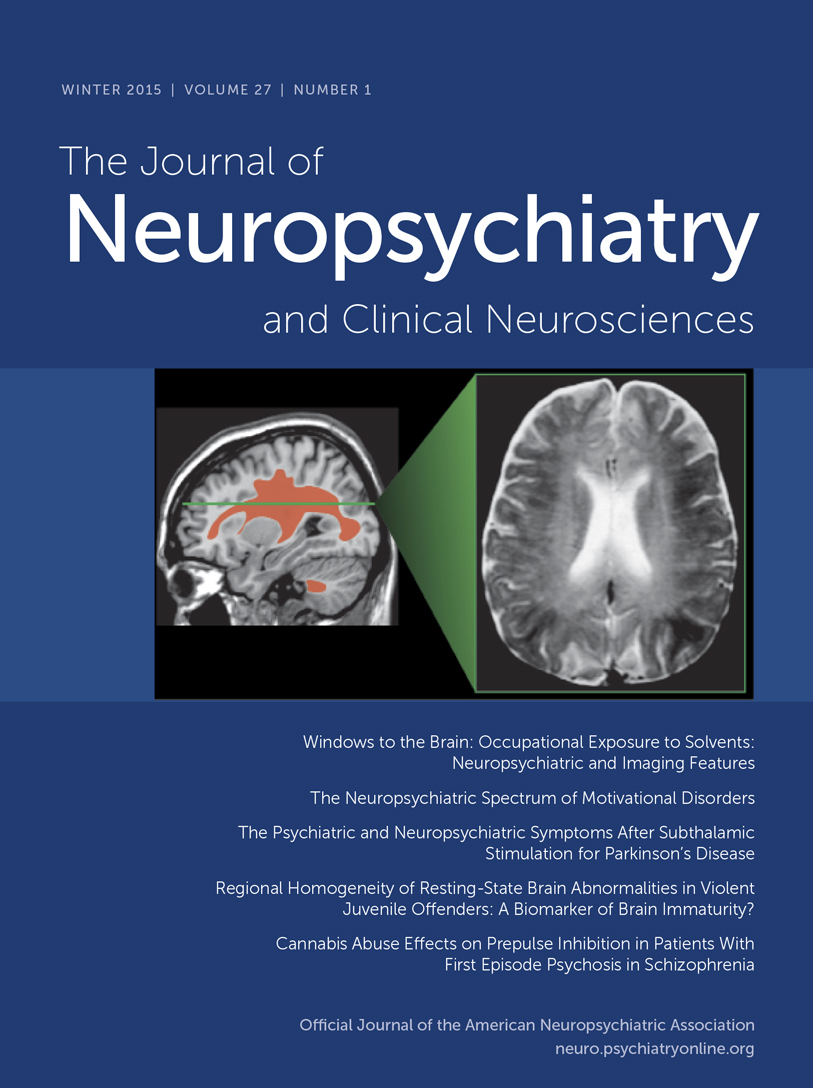Persistent Penile Erection (Priapism) Associated With Quetiapine and Lithium
To the Editor: Priapism is an emergency condition in which a painful erection lasts more than 4 (or 6) hours despite that physical or psychological stimulation is not present. Treatment-induced priapism is thought to be related to vasoconstriction in the corpus cavernosum induced by blockade of α1- and α2-adrenergic receptors. The condition is infrequent (incidence ranges from 0.34 to 1.5 cases per 100,000 men).1 Treatment with antipsychotics is one of the priapism risk factors, particularly for antipsychotics with high α1 affinity (e.g., chlorpromazine and clozapine).2 Other mechanisms include neurological (e.g., spinal cord lesions) and vascular (e.g., sickle cell anemia, leukemia, and thalassemia) factors. Priapism can also result from illicit drugs. We present a case of treatment-induced priapism in a patient with bipolar disorder treated with quetiapine and lithium.
Case Report
“Mr. B” is a 28-year-old man with bipolar disorder treated with quetiapine (1000 mg/day) and lithium (300 mg/day). He reported to a urologist because of a painful, long-lasting (approximately 5 hours) penile erection. Doppler ultrasound examination revealed no blood flow abnormalities in the penis vessels. He received 600 mg of acetylsalicylic acid, 0.8 mL nadroparin (low-molecular-weight heparin; 9500 anti-Xa IU/mL), and a sedative agent. After excluding other causes, it was decided that priapism was induced by quetiapine, and the medication was discontinued. Regular blood, urine, and biochemical tests and a neurological examination were normal. We decided to increase the dose of lithium to 1125 mg/day (blood level of 0.67 mmol/L) and not to introduce other medications. No recurrence of priapism was observed during further treatment, when, because of recurring mild psychotic symptoms, first olanzapine (up to 7.5 mg/day, withdrawn due to excessive sedation) and then aripiprazole (currently 15 mg/day) were administered.
Discussion
Almost all antipsychotics have been reported to rarely cause priapism due to their α-adrenergic antagonism,3 even after a single dose.4 There are no reports of priapism induced by lithium alone. Using the Naranjo Adverse Drug Reaction Probability Scale,5 a score of 7 for quetiapine was found (a probable adverse drug reaction to the drug). Clinicians should be cautious about it due to severe consequences of delayed treatment of this adverse reaction.
1 : Nationwide emergency department visits for priapism in the United States. J Sex Med 2013; 10:2418–2422Crossref, Medline, Google Scholar
2 : Priapism associated with antipsychotics: role of alpha1 adrenoceptor affinity. J Clin Psychopharmacol 2010; 30:68–71Crossref, Medline, Google Scholar
3 : Priapism associated with conventional and atypical antipsychotic medications: a review. J Clin Psychiatry 2001; 62:362–366Crossref, Medline, Google Scholar
4 : Priapism due to a single dose of quetiapine: a case report. Turk Psikiyatri Derg 2011; 22:195–199Medline, Google Scholar
5 : A method for estimating the probability of adverse drug reactions. Clin Pharmacol Ther 1981; 30:239–245Crossref, Medline, Google Scholar



